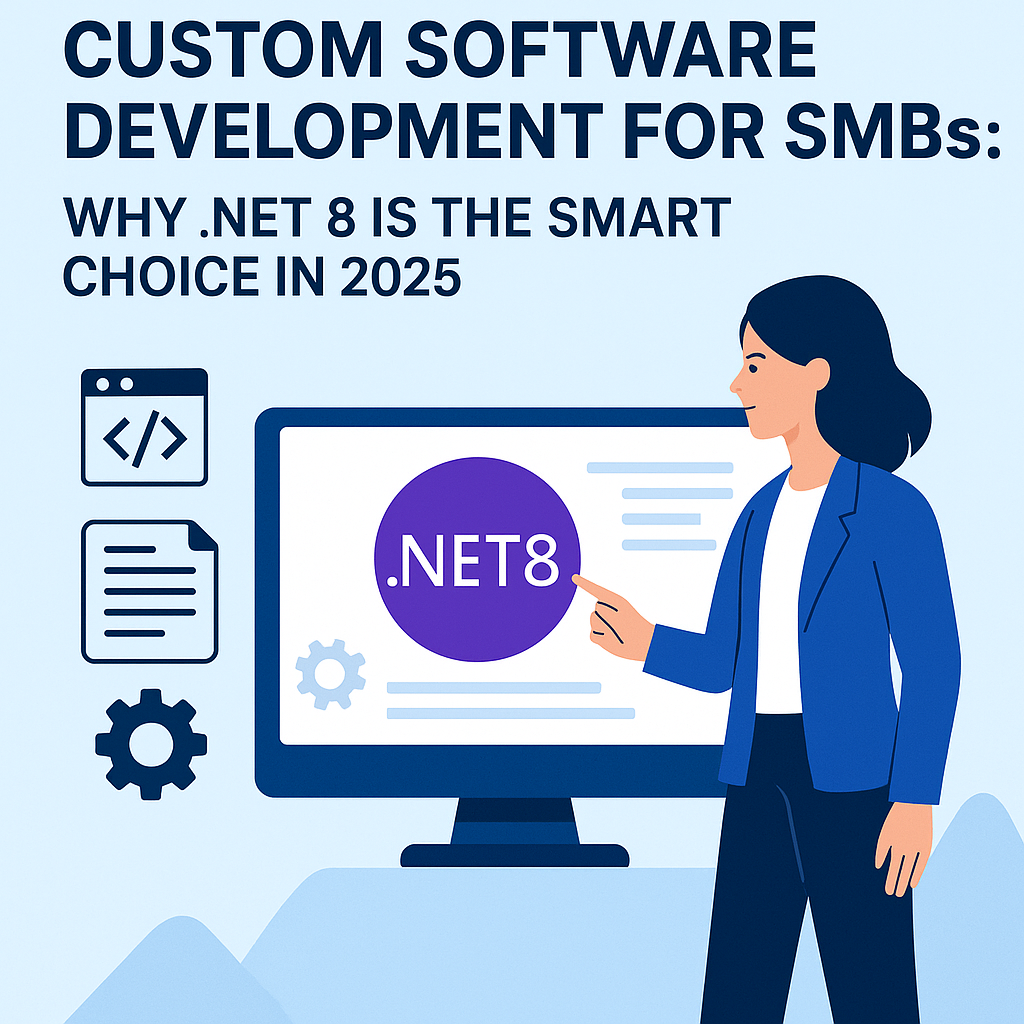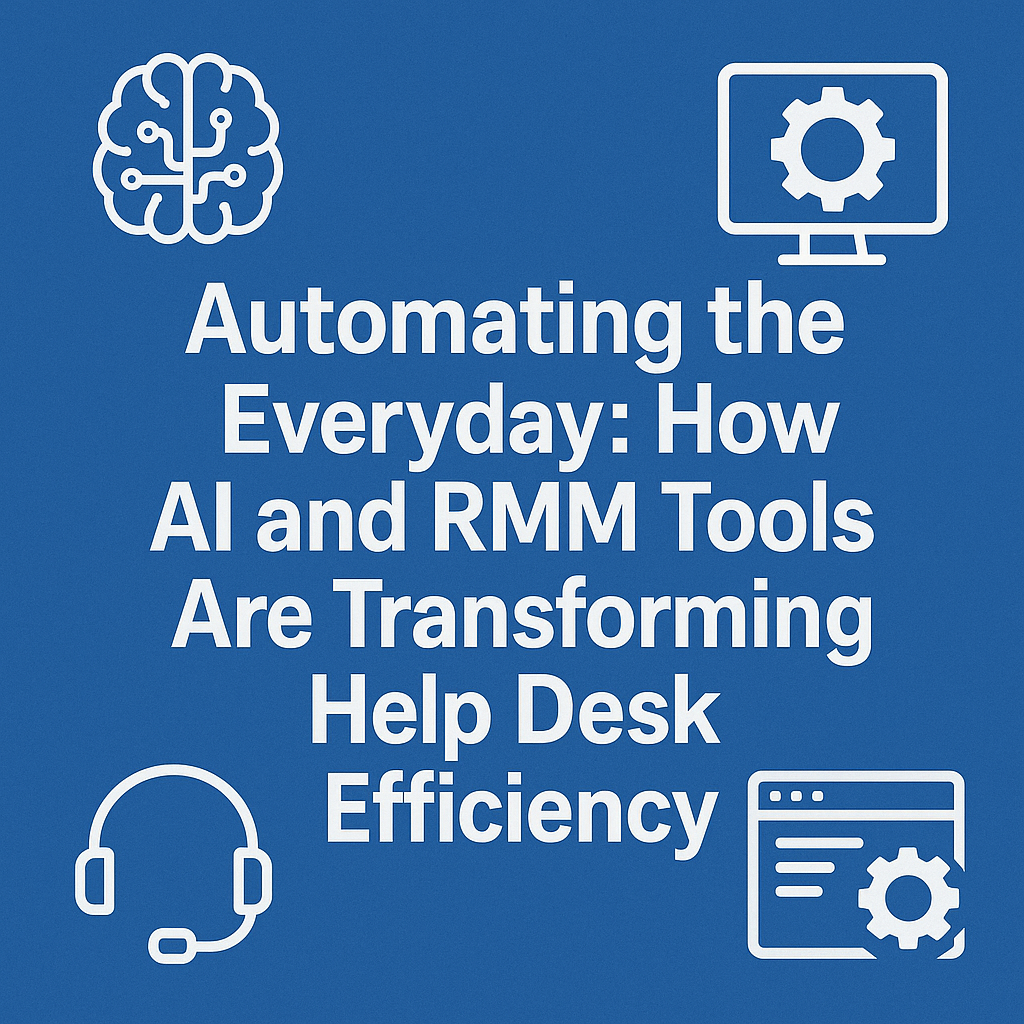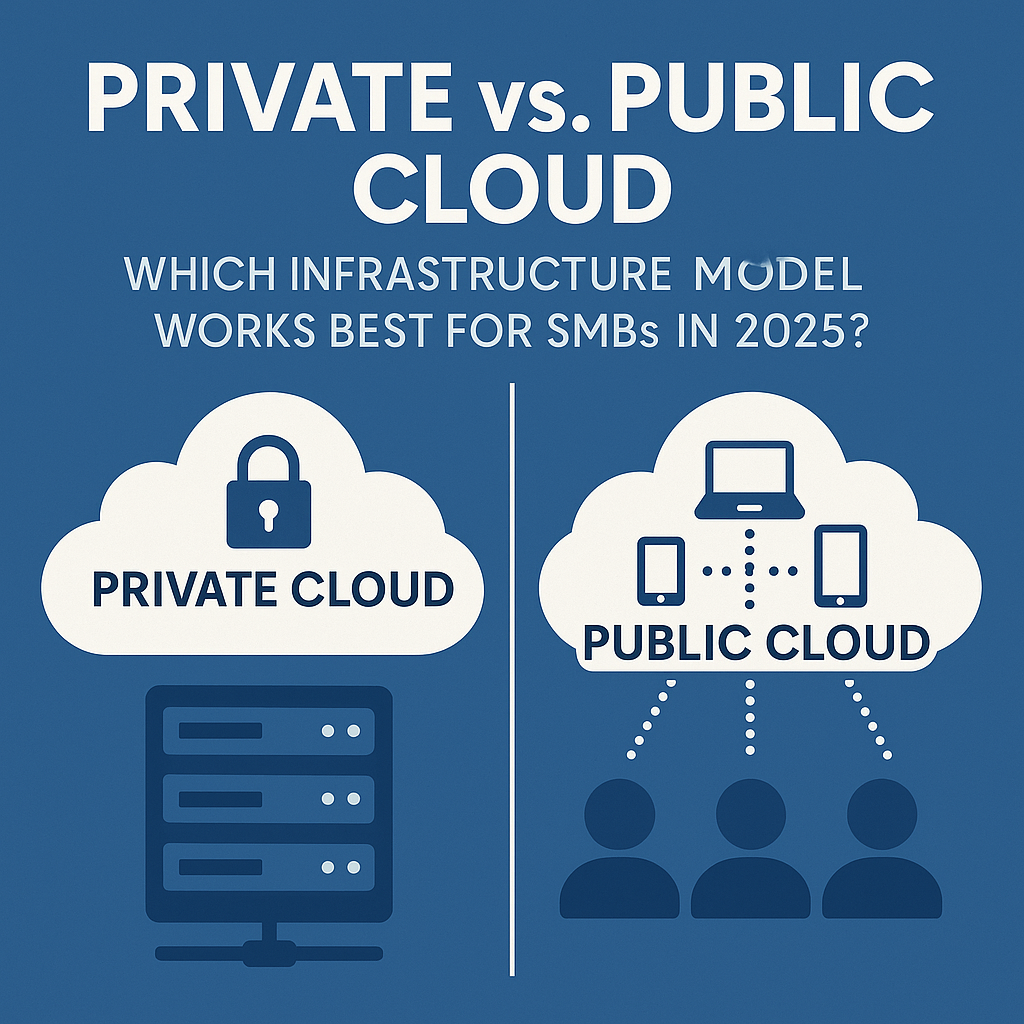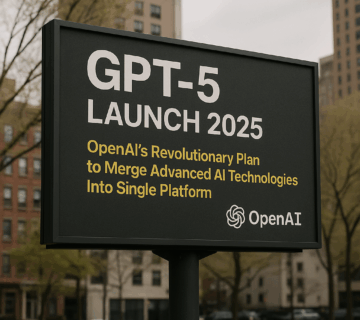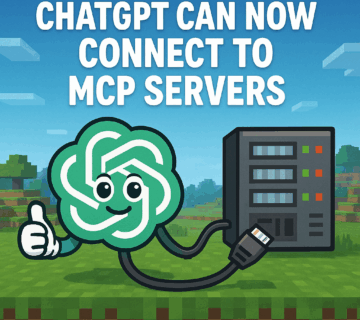From Legacy SQL to Modern APIs: A Practical Migration Playbook for SMBs
🎙️ Dive Deeper with Our Podcast!
Legacy SQL to Modern API Migration Playbook
👉 Listen to the Episode: https://technijian.com/podcast/legacy-sql-to-modern-api-migration-playbook/
Why Your Business Can’t Afford to Ignore Database Modernization in 2025
Is your small or medium-sized business still relying on legacy SQL databases while your competitors are racing ahead with modern API-driven architectures? You’re not alone. Thousands of SMBs are grappling with aging database systems that were once cutting-edge but now hold back growth, drain resources, and create security vulnerabilities.
The good news? Migrating from legacy SQL to modern APIs doesn’t have to be a nightmare. This comprehensive playbook will guide you through the migration process, explain why modern APIs are the future, and show you exactly how to make the transition without disrupting your business operations.
Understanding the Legacy SQL Challenge
Legacy SQL databases have served businesses well for decades, but the digital landscape has evolved dramatically. Traditional SQL systems, particularly older versions of Microsoft SQL Server, Oracle Database, and MySQL, present several challenges for modern SMBs:
Scalability Limitations: Legacy databases struggle to handle the massive data volumes and concurrent users that modern applications demand. As your business grows, you’ll hit performance ceilings that require expensive hardware upgrades.
Maintenance Burden: Older SQL systems require specialized database administrators, regular patching, and complex backup procedures. For SMBs with limited IT resources, this becomes a significant operational drain.
Integration Complexity: Connecting legacy databases to modern cloud services, mobile applications, and third-party tools often requires custom middleware and complicated ETL (Extract, Transform, Load) processes.
Security Risks: Older database versions may lack modern security features, leaving your business data vulnerable to breaches. Compliance with regulations like GDPR, HIPAA, or PCI-DSS becomes increasingly difficult.
Cost Escalation: Between licensing fees, hardware maintenance, backup infrastructure, and specialized personnel, the total cost of ownership for legacy SQL databases continues to climb year after year.
Why Modern APIs Are the Preferred Solution
Modern API-driven architectures represent a fundamental shift in how businesses manage and access their data. Rather than applications directly querying databases, they interact through well-designed APIs that provide numerous advantages:
Flexibility and Agility
Modern APIs decouple your data layer from your application layer, allowing you to modify backend systems without breaking existing applications. Need to switch database providers? Want to add a new data source? APIs make these changes seamless.
Superior Scalability
API-based architectures scale horizontally with ease. Cloud-native API platforms automatically handle traffic spikes, distribute load across multiple servers, and scale resources up or down based on demand—all without manual intervention.
Enhanced Security
Modern API gateways provide robust authentication, authorization, rate limiting, and encryption out of the box. You can implement OAuth 2.0, JWT tokens, and API keys to control exactly who accesses what data and when.
Simplified Integration
APIs speak the language of the modern web—RESTful JSON or GraphQL. This makes integration with mobile apps, web applications, IoT devices, and third-party services straightforward and standardized.
Reduced Technical Debt
By abstracting database complexity behind clean API interfaces, you reduce technical debt and make your systems more maintainable. New developers can onboard faster, and business logic stays consistent across all applications.
Cost Efficiency
Modern API platforms leverage cloud infrastructure, eliminating the need for expensive on-premises hardware. You pay only for what you use, and operational costs drop as management becomes largely automated.
The Practical Migration Playbook: 8 Steps to Success
Migrating from legacy SQL to modern APIs requires careful planning and execution. Here’s your step-by-step playbook:
Step 1: Audit Your Current Database Landscape
Begin with a comprehensive assessment of your existing SQL infrastructure:
- Document all databases, their versions, and current usage patterns
- Identify applications and systems that depend on each database
- Map data relationships, stored procedures, and triggers
- Analyze query performance and identify bottlenecks
- Review current backup and disaster recovery procedures
- Assess security configurations and compliance requirements
This audit provides the foundation for your migration strategy and helps identify potential challenges before they become problems.
Step 2: Define Your Target Architecture
Not all modernization paths are identical. Choose the architecture that aligns with your business needs:
API-First Cloud Database: Services like MongoDB Atlas, Amazon Aurora, or Google Cloud SQL combined with API management platforms provide fully managed solutions.
Serverless Architecture: AWS Lambda, Azure Functions, or Google Cloud Functions can serve APIs backed by cloud databases, eliminating server management entirely.
Microservices Approach: Break monolithic database structures into domain-specific services, each with its own API and data store.
Hybrid Model: Maintain legacy SQL for certain workloads while gradually moving others to modern APIs—ideal for risk-averse migrations.
Step 3: Design Your API Layer
Create a well-architected API layer that will serve as the bridge between applications and data:
- Define clear API endpoints following RESTful principles or GraphQL standards
- Establish consistent naming conventions and versioning strategies
- Design response formats and error handling protocols
- Document authentication and authorization requirements
- Plan rate limiting and throttling policies
- Create comprehensive API documentation using tools like Swagger or OpenAPI
Step 4: Implement Data Migration Strategy
Data migration is often the most critical and risky phase. Consider these approaches:
Big Bang Migration: Move all data at once during a planned maintenance window—faster but riskier.
Phased Migration: Migrate data incrementally by module, feature, or department—safer but longer timeline.
Parallel Run: Maintain both systems temporarily, syncing data until confidence is established in the new system.
Trickle Migration: Gradually redirect traffic to new APIs while keeping legacy systems as fallback.
For most SMBs, we recommend a phased or parallel run approach to minimize risk and business disruption.
Step 5: Build API Gateway and Backend Services
Implement the technical infrastructure:
- Set up API gateway solutions like AWS API Gateway, Azure API Management, or Kong
- Develop backend services that connect APIs to your new database
- Implement caching layers using Redis or Memcached for performance
- Configure load balancers and auto-scaling policies
- Establish monitoring and logging using tools like DataDog, New Relic, or CloudWatch
- Create automated testing frameworks for API functionality
Step 6: Migrate Applications Gradually
Update your applications to consume APIs instead of direct database connections:
- Start with non-critical applications to gain experience
- Refactor application code to use API calls instead of SQL queries
- Implement proper error handling and retry logic
- Update connection strings and configuration files
- Conduct thorough testing in staging environments
- Train development teams on API consumption best practices
Step 7: Optimize and Monitor
Once migrated, continuous improvement is essential:
- Monitor API performance metrics (latency, throughput, error rates)
- Optimize slow endpoints based on real-world usage
- Review and adjust caching strategies
- Implement alerts for anomalies or failures
- Collect user feedback on application performance
- Conduct regular security audits and penetration testing
Step 8: Decommission Legacy Systems
After confirming stability and performance:
- Archive legacy data according to compliance requirements
- Document the migration process for future reference
- Safely decommission old database servers
- Redirect cost savings to innovation initiatives
- Celebrate the team’s success and lessons learned
Real-World Benefits: What SMBs Gain from Migration
SMBs that have successfully migrated from legacy SQL to modern APIs consistently report these benefits:
60-80% Reduction in Infrastructure Costs: Eliminating on-premises database servers, backup infrastructure, and specialized database administrators significantly reduces operational expenses.
3-5x Faster Development Cycles: Developers spend less time wrestling with database quirks and more time building features that drive business value.
99.9%+ Uptime: Cloud-native API platforms provide reliability that’s difficult to achieve with on-premises infrastructure.
Improved Customer Experience: Faster response times, better mobile app performance, and seamless integrations create happier customers.
Enhanced Compliance: Modern platforms offer built-in compliance frameworks for GDPR, HIPAA, SOC 2, and other regulatory requirements.
Business Agility: The ability to quickly integrate new tools, launch new products, and respond to market changes becomes a competitive advantage.
Common Migration Pitfalls to Avoid
Learn from others’ mistakes by watching out for these common traps:
Insufficient Planning: Rushing into migration without proper assessment and planning leads to cost overruns and technical failures.
Underestimating Data Complexity: Legacy databases often contain years of accumulated complexity—stored procedures, triggers, and undocumented business logic that’s difficult to replicate.
Inadequate Testing: Skipping comprehensive testing results in data corruption, performance issues, and frustrated users.
Poor Communication: Failing to keep stakeholders informed creates confusion and resistance to change.
Ignoring Change Management: Technical migration is only half the battle—people need training, documentation, and support.
Lack of Rollback Plan: Always have a clear plan for reverting to legacy systems if critical issues arise.
Choosing the Right Technology Stack
The modern API ecosystem offers numerous options. Here are popular choices for SMBs:
Database Options:
- MongoDB Atlas (document-based, highly scalable)
- PostgreSQL on AWS RDS or Google Cloud SQL (modern relational)
- Amazon DynamoDB (serverless NoSQL)
- Firebase Firestore (real-time applications)
API Frameworks:
- Node.js with Express or Fastify
- Python with FastAPI or Django REST Framework
- .NET Core Web API
- Go with Gin or Echo
API Management:
- AWS API Gateway
- Azure API Management
- Google Cloud Endpoints
- Kong or Tyk (open-source options)
Monitoring and Analytics:
- DataDog
- New Relic
- Prometheus + Grafana
- CloudWatch or Azure Monitor
Frequently Asked Questions
How long does a typical migration take for an SMB?
Migration timelines vary based on database complexity, data volume, and number of connected applications. Most SMBs complete migrations in 3-6 months with a phased approach. Simple migrations might take 6-8 weeks, while complex enterprise-grade systems could require 9-12 months.
What’s the typical cost of migrating from legacy SQL to modern APIs?
Costs range from $25,000 to $150,000+ for SMBs, depending on database complexity, data volume, and whether you use internal resources or external consultants. However, most businesses recoup this investment within 12-18 months through reduced infrastructure and operational costs.
Will we experience downtime during migration?
With proper planning, downtime can be minimal or even zero. Phased migrations and parallel run strategies allow you to maintain business continuity throughout the process. Critical migrations are often scheduled during low-traffic periods with maintenance windows.
Do we need to hire new staff with API expertise?
Not necessarily. Many SMBs successfully upskill existing IT staff through training programs. However, partnering with experienced migration consultants can accelerate the process and avoid costly mistakes.
What happens to our existing SQL queries and stored procedures?
These need to be refactored into API endpoints and backend service logic. While this requires effort, it’s an opportunity to optimize and modernize business logic that may have accumulated technical debt over years.
Is our data secure during and after migration?
Modern API platforms typically offer superior security compared to legacy systems, including encryption at rest and in transit, advanced authentication mechanisms, and comprehensive audit logging. Proper implementation is key—working with experienced professionals ensures security best practices are followed.
Can we migrate gradually, or does it have to be all at once?
Gradual migration is not only possible but recommended for most SMBs. You can migrate application by application, feature by feature, or even maintain hybrid systems indefinitely if certain workloads are better suited to legacy databases.
What if we encounter problems during migration?
A well-planned migration includes rollback procedures and contingency plans. By maintaining parallel systems during transition and thoroughly testing before cutover, risks are minimized. Having experienced partners provides additional safety nets.
How do modern APIs handle complex SQL queries and joins?
APIs abstract complexity through well-designed endpoints that encapsulate business logic. Complex queries are handled in the backend service layer, often with improved performance through caching and optimization. In some cases, switching to document-based databases eliminates the need for complex joins entirely.
What about compliance and data governance?
Modern API platforms excel at compliance, offering features like automated audit logging, role-based access control, data encryption, and compliance certifications (SOC 2, HIPAA, PCI-DSS). Properly configured APIs can actually improve compliance posture compared to legacy systems.
How Technijian Can Help Your Migration Journey
At Technijian, we specialize in helping SMBs navigate the complex journey from legacy SQL databases to modern, API-driven architectures. Our team has successfully guided dozens of businesses through digital transformation, and we understand the unique challenges small and medium-sized companies face.
Our Comprehensive Migration Services
Assessment and Strategy: We conduct thorough audits of your current infrastructure and design a customized migration roadmap aligned with your business objectives and budget constraints.
Architecture Design: Our experts design scalable, secure API architectures using industry best practices and cutting-edge technologies that position your business for long-term growth.
Hands-On Implementation: We don’t just consult—we roll up our sleeves and execute the migration alongside your team, handling everything from data migration to API development and application refactoring.
Training and Knowledge Transfer: We ensure your team is fully equipped to manage and maintain the new systems through comprehensive training programs and detailed documentation.
Ongoing Support: Our relationship doesn’t end at deployment. We provide ongoing monitoring, optimization, and support to ensure your modern infrastructure continues delivering value.
Why Choose Technijian?
SMB-Focused Expertise: Unlike large consultancies that apply one-size-fits-all approaches, we understand the specific constraints and opportunities of small and medium-sized businesses.
Modern Technology Stack: We leverage the latest cloud-native technologies and API platforms, ensuring your infrastructure is built for the future, not the past.
Proven Methodology: Our phased migration approach minimizes risk, reduces downtime, and delivers measurable results at each stage of the journey.
Cost-Effective Solutions: We maximize value by right-sizing solutions to your needs—no over-engineering, no wasted resources.
Local Support, Global Standards: We combine personalized, accessible support with enterprise-grade technical excellence.
Ready to Modernize Your Database Infrastructure?
The gap between businesses running on legacy SQL and those leveraging modern APIs grows wider every day. Don’t let outdated technology hold back your growth, increase your costs, or expose you to security risks.
Contact Technijian today for a free infrastructure assessment and discover how we can transform your database architecture into a competitive advantage.
Whether you’re just beginning to explore migration options or ready to execute a comprehensive modernization strategy, our team is here to guide you every step of the way. Let’s build your business’s digital future together.
Technijian – Transforming SMB Technology Infrastructure for the Modern Era
About Technijian
Technijian is a premier managed IT services provider, committed to delivering innovative technology solutions that empower businesses across Southern California. Headquartered in Irvine, we offer robust IT support and comprehensive managed IT services tailored to meet the unique needs of organizations of all sizes. Our expertise spans key cities like Aliso Viejo, Anaheim, Brea, Buena Park, Costa Mesa, Cypress, Dana Point, Fountain Valley, Fullerton, Garden Grove, and many more. Our focus is on creating secure, scalable, and streamlined IT environments that drive operational success.
As a trusted IT partner, we prioritize aligning technology with business objectives through personalized IT consulting services. Our extensive expertise covers IT infrastructure management, IT outsourcing, and proactive cybersecurity solutions. From managed IT services in Anaheim to dynamic IT support in Laguna Beach, Mission Viejo, and San Clemente, we work tirelessly to ensure our clients can focus on business growth while we manage their technology needs efficiently.
At Technijian, we understand modern challenges such as attempts to hack Gmail, rising security concerns highlighted by cases like the T-Mobile lawsuit, and evolving communication technologies including RCS message standards. To address these, we provide a suite of flexible IT solutions designed to enhance performance, protect sensitive data, and strengthen cybersecurity. Our services include cloud computing, network management, IT systems management, and disaster recovery planning. We extend our dedicated support across Orange, Rancho Santa Margarita, Santa Ana, and Westminster, ensuring businesses stay adaptable and future-ready in a rapidly evolving digital landscape. Cyber threats are no longer limited to large corporations—small and mid-sized businesses are increasingly being targeted due to weaker defenses. That’s why Technijian emphasizes proactive monitoring, endpoint protection, and multi-layered security protocols that reduce the risk of downtime and data breaches.
Beyond security, we also focus on compliance and regulatory readiness. Whether it’s HIPAA, PCI DSS, or SOC 2 standards, our team ensures that businesses remain audit-ready and avoid costly penalties while maintaining trust with customers.
We also recognize the importance of scalable IT strategies. From supporting hybrid workplaces to deploying advanced collaboration tools, we design infrastructures that evolve with your company’s growth. Coupled with our 24/7 helpdesk and rapid incident response, you can count on Technijian not just as an IT provider, but as a long-term partner in business resilience.
Our proactive approach to IT management also includes help desk support, cybersecurity services, and customized IT consulting for a wide range of industries. We proudly serve businesses in Laguna Hills, Newport Beach, Tustin, Huntington Beach, and Yorba Linda. Our expertise in IT infrastructure services, cloud solutions, and system management makes us the go-to technology partner for businesses seeking reliability and growth.
Partnering with Technijian means gaining a strategic ally dedicated to optimizing your IT infrastructure. Experience the Technijian Advantage with our innovative IT support services, expert IT consulting, and reliable managed IT services in Irvine. We proudly serve clients across Irvine, Orange County, and the wider Southern California region, helping businesses stay secure, efficient, and competitive in today’s digital-first world.
